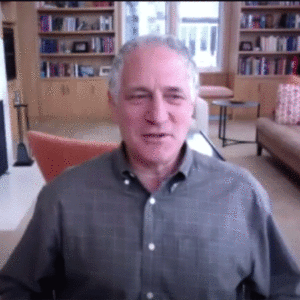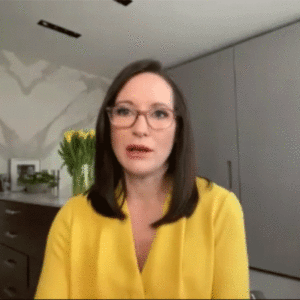Sidewalk Labs, a subsidiary of Google owner Alphabet, recently announced that it would withdraw from a proposed 12-acre (5 ha) smart-city project in Toronto. But Sidewalk is already in talks to repurpose the innovations devised for that project in other development projects across the world, said Dan Doctoroff, Sidewalk chairman and CEO, during a webinar kicking off ULI’s Spring Meeting Webinar Series.
Last week, Sidewalk announced its decision to end its two-and-a-half-year effort to develop Quayside as a neighborhood with cutting-edge technologies ranging from mass timber skyscrapers and movable robotic furniture to streets with LED strips to indicate “green wave” routes for cyclists and pedestrians.
While the $980 million (C$1.3 billion) proposal had its critics, Doctoroff said the exit was necessitated by the COVID-19 pandemic, which made the project’s scale and sweep untenable.
The sudden, drastic economic disruption and uncertainties created by the global health crisis made it impossible to achieve realistic financial returns on Quayside while still achieving the innovations for which the project was to be a showcase, he said.
“It was going to be too much effort over too long a time, with too much risk,” explained Doctoroff, who before joining New York City–based Sidewalk in 2015 served as CEO and president of Bloomberg LP and as deputy mayor for economic development and rebuilding in New York City from 2002 to 2008. He was interviewed by BNN Bloomberg anchor Amanda Lang for the webinar.
Doctoroff had strong praise for public-sector partner Waterfront Toronto and its chairman, local developer Stephen Diamond. The government agency had compelled Sidewalk to scale back its initial vision for the project and to agree to allow Waterfront Toronto to oversee data and privacy issues. The agency’s scrutiny and feedback ultimately helped Sidewalk to refine its ideas for improving cities, Doctoroff said.
“At some level we got put through the grist mill, but at some level emerged from it so much smarter and more sensitive,” Doctoroff said.
Quayside’s core concepts included creating affordable, technologically advanced housing; improving mobility; and achieving low-carbon, net-positive energy efficiency. “We would actually export energy back to the grid,” Doctoroff explained. Those ideas remain viable, and he said the company already is engaged in discussions for trying them out elsewhere.
“In the wake of that announcement last week, we’ve been overwhelmed with interest from all over the world,” said Doctoroff, who did not provide specifics. He said that in addition to providing its innovations to developers, Sidewalk potentially could become an investor or co-investor in some commercial real estate projects, “where they’re committed to a heavy dose of innovation.”
Sidewalk might also consider at some point joining in another project in Toronto. “We love the city,” he said, touting its diversity, inclusiveness, and “growing tech ecosystem.”
Doctoroff also said that Sidewalk had already incubated three companies that would help commercialize its innovations.
Although the COVID-19 pandemic ended Sidewalk’s Quayside plans, Doctoroff said he believes the crisis ultimately will create an even greater need for urban innovation—including the sort of data collection and analysis that had concerned some Toronto residents, which could become important tools for controlling the spread of future disease outbreaks akin to COVID-19. Doctoroff said that New Yorkers similarly had adjusted to a network of surveillance cameras installed in lower Manhattan after the September 11 attacks.
Doctoroff also thinks that dense urban environments can adjust to disease threats, despite residents’ and workers’ closer proximity.
“The notion of density does not, in itself, have to be a negative,” Doctoroff argued. “It’s how you manage density is what matters. When you look at a city like Seoul, which is denser than New York City, or Hong Kong or Singapore, they all managed through this because they were prepared. And they had been through it to some extent,” he said, referring to those cities’ experience coping with the 2003 SARS epidemic.
“We’re going to have to establish the same set of skills, and it’s going to have to be very visible in order to attract people back to the city and make them comfortable riding the subway,” Doctoroff said.
To improve public confidence in mass transit, Doctoroff suggested hiring large numbers of unemployed workers and assigning them to continually wipe down subways to reduce the risk of infection. Developing clear public health guidelines for storefront retail facilities, restaurants, public gatherings, and museums and cultural attractions that are an important part of cities’ appeal is also critical, he said.
Over the longer term, architects will need to focus more on using design as a tool for fighting disease outbreaks, Doctoroff said. He predicted the likely decline of the once-popular open office floor plan and the trend of squeezing more workers into offices. Instead, developers must envision a future in which individuals will need to be allocated more space, more and more communication will take place via video apps such as Zoom, and conference rooms and elevators may be limited to four people at a time.
“We look at it at Sidewalk and say, if social distancing is going to be the norm, we’re not going to be able to get more than a third of our people back in the office,” Doctoroff said.
Doctoroff said that it is difficult to predict how the current pandemic will play out. “Does everything shift when you have a vaccine, or an effective treatment?” he asked. Alternatively, he suggested, “dramatically better information” on the risk to particular segments of the population might enable officials to manage the crisis and reduce the risk for others.
“If I had a guess, I’d say balance all those things out and the impact will be less than people think right now,” he speculated. “But my crystal ball is a little bit fuzzy, too.”
ULI full members can access the full webinar on Knowledge Finder.







